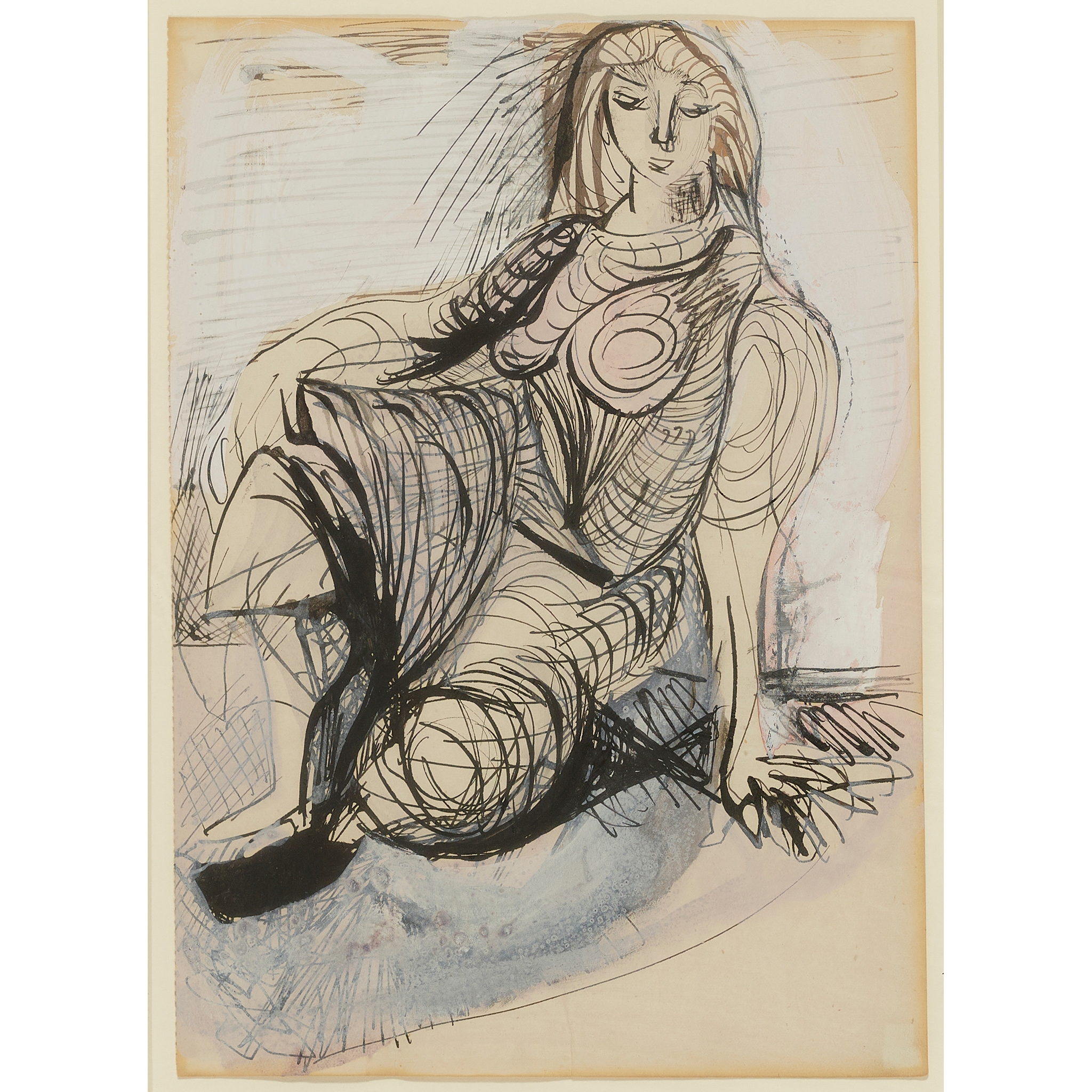CERI RICHARDS (BRITISH 1903–1971) §
SEATED WOMAN
£3,276
Auction: 15 JANUARY 2025 FROM 10:00 GMT
Description
pen & ink with wash on paper, with estate blind stamp
Dimensions
28cm x 20cm (11in x 7 7/8in) (Unframed)
Footnote
Ceri Richards’ 1930s paintings and drawings of London’s market traders – the costermen and women who on high-days and holidays would reimagine themselves as Pearly Kings and Queens – are some of the most unique and experimental works of inter-war Modern British Art. These works blend the influence of Picasso and Cubism with the poetry of the working-class of Dylan Thomas to create images that are both grounded in everyday life and yet intentionally surreal.
As Mel Gooding has written, ‘In his mind’s eye, [the Pearly Kings and Queens] become fantastical, almost phantasmagorical figures – personnages – or ciphers – rather than people. It was at Hampstead Fair that Richards saw a costerman – the archetypal London street vendor – sitting at a pub table with one eye-socket sewn up. This is what André Breton would have called a ‘convulsive image’, something in the everyday that appears so extraordinary as to remind you that the marvellous is always close to the surface’. [Mel Gooding in the catalogue for Ceri Richards – The Poetic Imagination, Jonathan Clark & Co., London, 2010]
Whilst Richards was as versed in French Surrealist ideas as any British artist of the 1930s, he never took Surrealism as an over-riding doctrine, more as a key to creativity, specifically the means to make form associative or changeling, turning the outlandish feathers in the costers’ hats into flowers or fountains – or all three at once, making prose into poetry.

